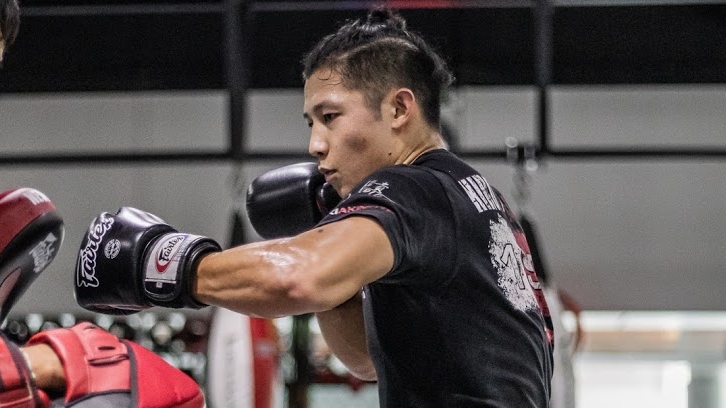What’s boxing’s most powerful and destructive punch? It’s one of the most asked questions in the sport. Some say it’s the straight cross, others the almighty uppercut. While it certainly varies from fighter to fighter, there’s a definite case to make for the lead hook being boxing’s most dangerous.
The lead hook is incredibly powerful because it’s compact, shifts momentum seamlessly from the core, and travels the shortest distance from its starting point to the point of contact. When executed properly, it’s fast and explosive, with the ability to shut the lights off on anyone who doesn’t see it coming.
The goal is to make the lead hook second nature, to embed it into your muscle memory, so constant practice and repetition is essential. But more than that, the lead hook can be baked into your combinations, used as a sharp but devastating counter, and even utilized in defensive situations.
If you’re looking to add this punch to your arsenal, hone it, and incorporate it into your particular style, we’ve come up with a few points for you to consider. Let’s take a look at a handful of ways you can improve this amazing punch.
Today, Evolve Daily shares how to master the lead hook, boxing’s most powerful punch.
1) Master the Textbook Basics
Of course, it’s always great to start with the basics. That’s where every great punch develops the fundamental movements in order to generate great power. Mastering the lead hook will add a whole new dynamic to your game.
The lead hook is thrown with the fist that is closest to your opponent. It’s the fist you jab with. Standing in the orthodox stance, that would be your left hand. If you’re a southpaw, it’s your right.
Make sure your elbows are tucked in close to your body. Keep your guard tight. Without flaring your elbows, throw the lead hook in one smooth but explosive motion, using your shoulders as a spring to launch your forearm and your fist toward the intended target.
You will want to bend your knees slightly to generate power from the base and the core, just before throwing this punch. This is often called sitting down on your punch to get the most power out of it.
Turn your torso into the attack, and pivot your lead foot towards your opponent to generate maximum torque. The key here is to make sure you’re shifting your entire weight into the hook, so that it transfers to your fist and does immense damage on impact.
If executed correctly, it will have a heavy knockback effect on your opponent, in some cases even breaking through your opponent’s glove guard. If you can land clean, the lead hook has crazy knockout potential.
2) Speed vs. Power
Now that you’ve mastered the basic technique, it’s time to focus on generating enough power with the lead hook to do serious damage. In the classic debate between speed and power, speed always wins.
Why? Because speed increases the chances of the punch landing. If it’s a heavy, cumbersome punch, it can easily be telegraphed. That makes it easy to defend against. In contrast, if the punch is fast and explosive, it’s hard to read and decipher. Opponents will rarely be able to figure out its timing.
Furthermore, speed always equals power in boxing. So the faster your punches, the more velocity they carry, which translates into a more damaging punch.
Truth be told, speed and power are not separate in boxing. In fact, speed equates to power. Some of the fastest boxers in history like Mike Tyson and Manny Pacquiao were also the most powerful knockout artists.
3) Catch Them Coming In
The next step is actually using the lead hook to score a knockout, or at least lay on a thick serving of damage. What’s the best way to do that? Catch your opponents coming in, using their momentum to your favor. The most damaging punch in boxing is the one your opponent doesn’t see coming.
Boxing is an ebb and flow of offense and defense. One moment you’re on the attack, and the next you’re defending. It’s this unique rhythm of fighting that pugilism is all about.
The next time your opponent charges at you, take a quick step back and uncork the lead hook. Throw it with speed, power, and conviction. More often than not, you can catch your opponent right on the chin with a well-placed punch. This lead hook variation is sometimes called the “check hook.”
Boxing legend Roy Jones Jr. used this tactic to great effect in his prime, and so did pound-for-pound king Floyd Mayweather Jr. Bernard Hopkins stopped Oscar Dela Hoya in 2004 with a check hook to the body that instantly crumpled “The Golden Boy.”
4) Counter With Conviction
Last but not least, use the lead hook as a sharp counter.
You can throw it over the top of an opponent’s straight cross, or simultaneously to counter a southpaw opponent’s jab. You can unleash a counter lead hook in the middle of an opponent’s combination.
You can throw this punch with your back against the ropes, or when you’re trapped in a corner. The bottom line is that the lead hook is powerful enough to get you out of some sticky situations. In fact, you can even throw this hook inside the clinch, if you can get enough separation.
The possibilities for the lead hook are endless.
Practice the lead hook on a daily basis on the heavy bag, the double-ended bag, on the focus mitts, or even the speed bag. Put it to good use in sparring, and you’ll master the technique, as well as the strategy in no time.
If you found this article interesting, here are some others that you may enjoy:



















